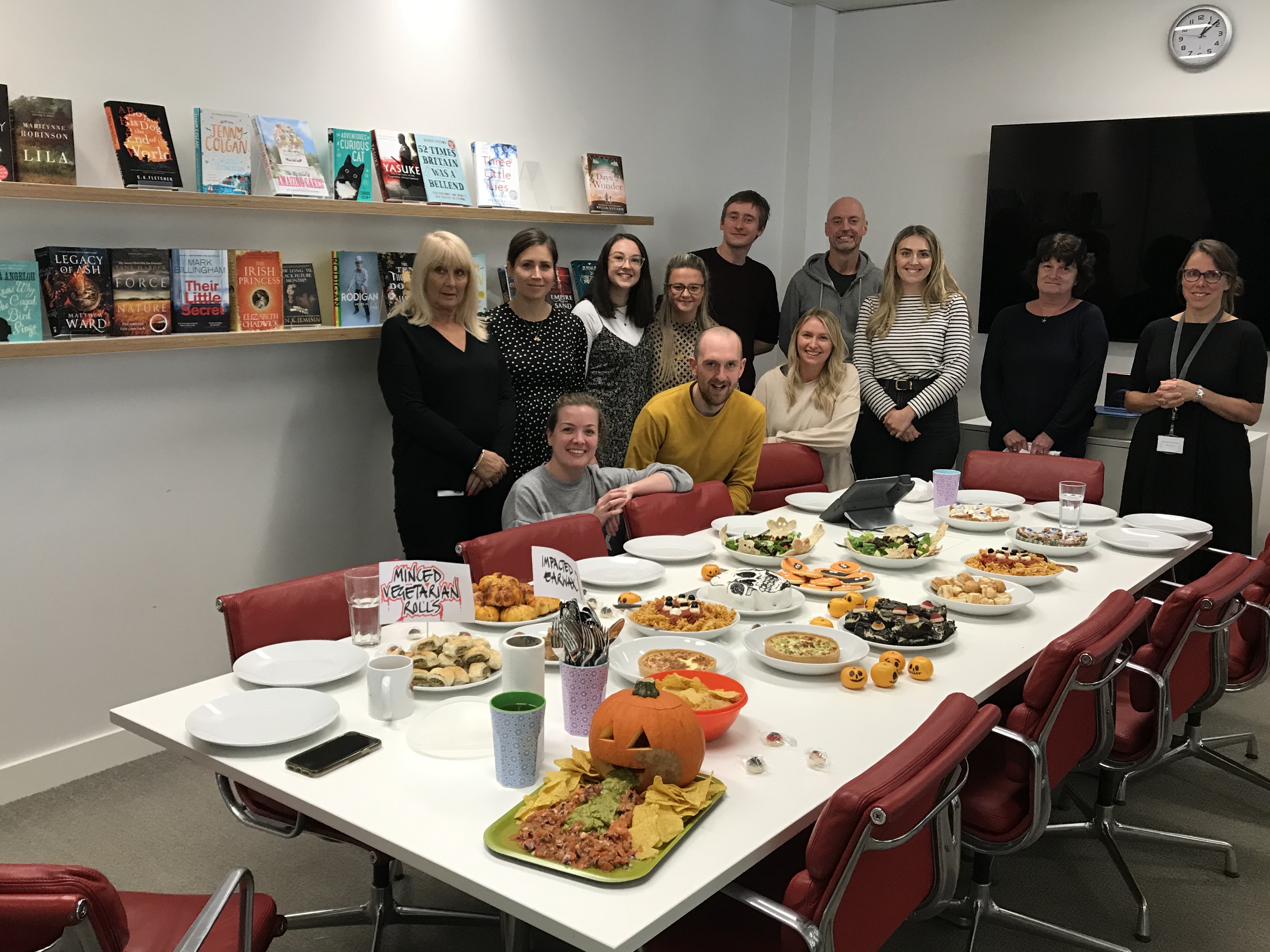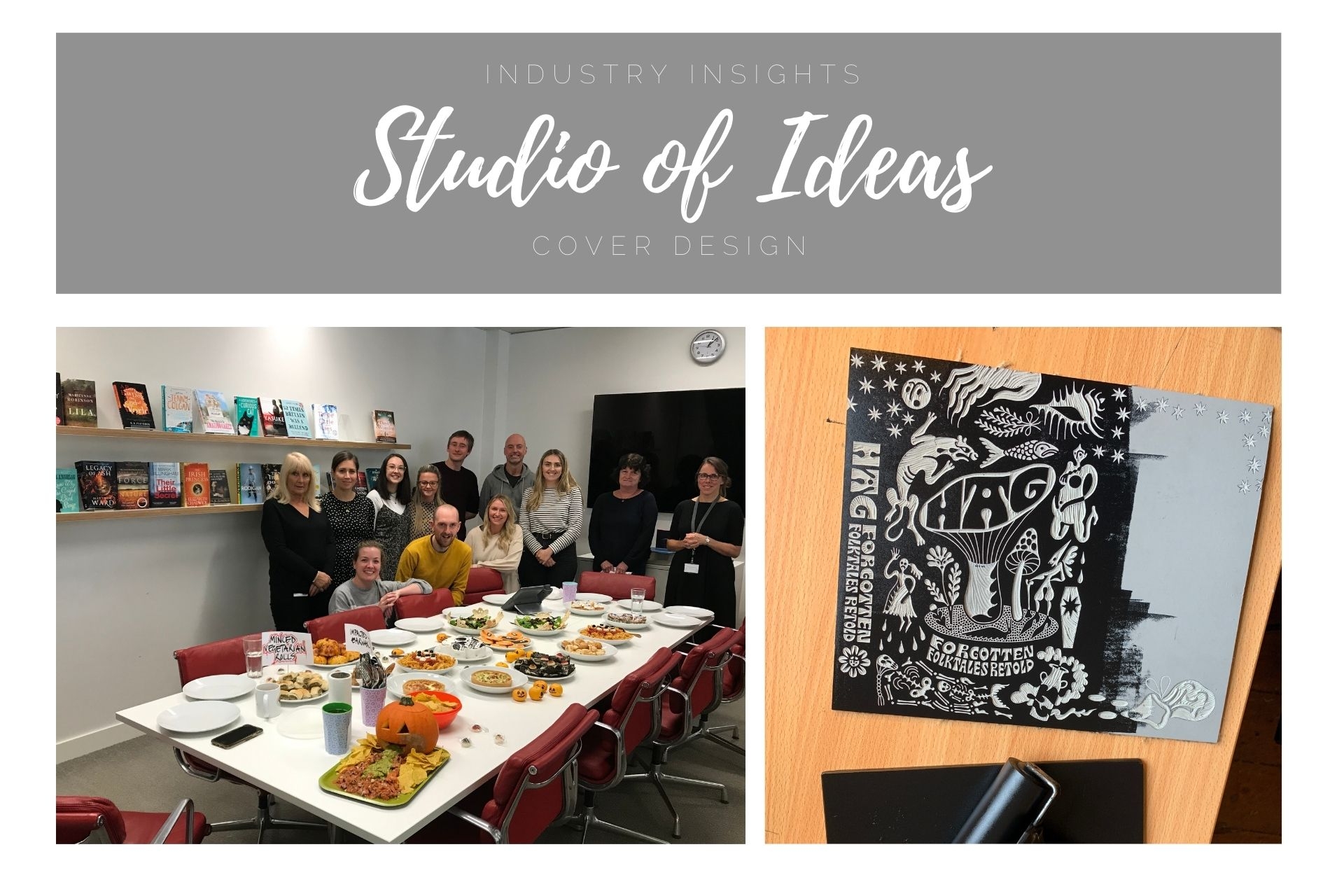Studio of Ideas is the creative team behind the covers that grace Little, Brown books. Book covers are of course a crucially important part in the publishing process. A wonderful cover will call to you from the other side of a bookshop and beckon you into the pages. Some of our team, once they’ve finished reading a book, will examine the cover again, just to see if they can discover the little hints and suggestions that give a clue to the contents. While bookcases generally reveal the spine of a book, which can be a complete delight of course, here at LoveReading we often bring out favourite books to sit and face the room. We are sure that when you stop and think about it, some of your most treasured books have covers that feel completely and wonderfully in tune with your thoughts and feelings. The cover of a book can be a very special thing indeed.
We have asked the Studio of Ideas team some questions about their individual roles and how the team work together. Their view from their office window looks completely stunning, which must help with the creative process! The Design for Education work that they do is obviously really important to them, and heart-warming to read about, while the photos showing the lino cut process are fascinating!
We’ll hand you over to the team now, welcome Studio of Ideas!
Tell us about your team.
Ellen (Middleweight Designer): We are made up of 9 designers ranging from Junior level to Creative Director, as well as a Studio Manager, Picture Researcher and two part-time freelancers. We are a very close team and all get along really well which is so nice, and plays a big part in why I love working there. We all work across all genres, so even from the start you get the chance to work on a range of interesting projects, and build up your skills in different areas of the market.

Do you work separately or collaborate on book design? How does the creative process within the team work?
Ellen (Middleweight Designer): We all have our own individual projects that we work separately on, and so will each oversee a cover design from start to finish. We are always sharing ideas with each other though within the team and asking for advice, as well as having creative catch-ups to show what we’re working on to gain feedback. We also work a lot with freelance illustrators and designers too which is always fun! I love getting the visuals in from someone you’ve commissioned and seeing how they have interpreted the brief – you end up with some really lovely solutions to covers.
How closely do you work with editors and authors during the design process?
Bekki (Senior Designer): We work quite closely with the editors - initially they will brief the book to the team, then the assigned designer will usually have another chat with them to go through everything and discuss ideas. Then the designer will create a first round of visuals, discuss them with the editor, and go back and fourth until we have reached something we are happy to share with the wider company at the Covers Meeting.
The author's involvement varies - some will be quite involved in the process, perhaps providing some ideas themselves, and seeing the cover at various points through the process, and others will see the cover at the end of the process.
Do you have eureka moments when ideas form, or is it more likely to be a detailed jigsaw forming process?
Siobhan (Senior Designer): I would say it’s different for each brief. Some ideas form very quickly and clearly from the outset, others will form from reading the manuscript and something visual will jump out, whilst others come together over a series of developments and discussions with the editor. Despite each brief following a slightly different process, there is often that moment, where you think, yes, this is coming together! That’s always a nice point to reach!

Do design trends from elsewhere slip into the book world? What has been one of your favourite trends over the last few years?
Sean (Art Director): It would be hard to pin point any one trend because I think so much design whether it be Illustration, photography, type or graphic design filters into books in one way or another. This is certainly the appeal book cover design has for me and to be open to everything and anything is really what book cover design is about. I think you do find that trends within book covers which come about from the success of certain titles, so you’ve seen ‘the man on a road’ heavily used, or ‘hair and partial woman’s face’ or the ‘woman in the water’ being crime signifiers that publishers feel safer to explore as they’ve seen success elsewhere. If I was to have a favoured trend it would probably be the moving away from condensed typefaces that fed the make it bigger attitude to more sophisticated typefaces we are seeing more on covers today.
How quickly do the markets move on and change with regards to book design?
Duncan (Creative Director): The pace can differ within different areas of the market and in some cases this pace has greatly accelerated over time. This change can happen within the same year even to the extent where cover designs which are still work in progress, have had to be re-evaluated to account of it.
We’ve heard that you work with Design for Education, explain a little about this project and why you feel it is so important.
Sean (Art Director): We’ve worked in some part with education for thirteen years and we try and make every year more important, more involved and better than the last. Not because we have to do it but because we want to do it. We work with Universities, Colleges and Schools that are as passionate about design education and about their students, so together we create opportunities for them to get the best possible experience, whether it be with projects we set or our internship where they get the chance to work as part of the team in-house.
It’s a huge part of what makes working with this design team at Little, Brown so special. We all invest a huge amount of our time because we believe that giving someone an opportunity is the right thing to do.
What advice would you give to someone who was interested in becoming a designer?
Charlotte (Designer): Go into book shops, look online and on social platforms, go to exhibitions to get a sense of trends at the moment and also the kind of design you like. Then you can focus on what kind of designer job is best for you in terms of skills and interest.

How would someone apply to your internship programme, has it been difficult to continue with this during the lockdown?
Bekki (Senior Designer): We usually put an advert on our instagram and twitter when we are open for applications, and typically we request a CV and a page of examples of work from applicants via email. Often people will also send over links to their website or instagram, if it shows off their work.
It was really interesting continuing our internship scheme during the pandemic. We were very keen to move forward with it, as it's more important than ever to give emerging designers opportunities, especially with the job market being so affected by COVID. We would usually have two or three interns for a 4-6 week period each, but this time we offered it to 4 designers, for a two week stint each, as we weren't quite sure how it would work. It went really well, and we were so impressed by the amount of work each intern produced. We always get our interns to work on live briefs, so they will get to see their work in print in a few months. And they each have multiple projects for their portfolios.
Do you have a (sneaky) favourite genre to work on?
Sophie (Middleweight Designer): I love to work on literary titles the most. The briefs are more likely to be quite open and interpretative so you can really explore the subjects creatively. You never know what you’ll end up with with literary covers and I love that!
Do you think readers are attracted to certain types of design for specific genres?
Charlotte (Designer): Yes. When an editor briefs a book, they will use cover comparisons of books in the market to suggest visual routes to explore. This is due to lots of reasons, with the main being the book is selling well.
For example, the editor sent me these comps to help distinguish which area of the market this cover needed to sit in. From there, it’s our job to make sure the cover works well and has the right ‘look’ of that genre.
.png)
What section do you head for when you go into a bookshop and what do you look at first when you pick up a book?
Matt (Junior Designer): I like going to see what has recently been published. It’s great to see what new and interesting covers there are, as well as the chance to find a new read. After that, then its normally on to the art section. When picking up a book, I’m often looking at the details in the design. Looking for the subtleties that help illustrate the ideas in the book.
Are you constantly on the look out for new ideas even when off-duty?
Sophie (Middleweight Designer): Definitely, inspiration pops up everywhere! I save folders of photos on my phone, on Pinterest or Instagram. Even if it’s just an amazing illustration I’ve seen, I’ll take a photo of the illustrator’s name and save it for whenever I have the chance to use them. I find the most inspiration wandering around a book shop.
Can you show us a few of your favourite designs over the last few years, or is that too mean a question?!
Below is one favourite cover from each designer, but also Charlotte added a description of one of hers too below, with some process photos:

Charlotte (Designer): HAG was definitely one of those projects that will be a favourite of mine! A really exciting part of our job is getting to work with other designers and illustrators. I commissioned Sophy Hollington to create a lino cut for a wrap-around cover. Sophy has a very distinct style, which fit perfectly with the folktale context the book has and the multiple themes the book explores, such as motherhood, sex, death, nature, fairies . . . the list goes on!


Keep up to date with Studio of Ideas:
Instagram: studio_of_ideas
Twitter: @studio_of_ideas
If you enjoyed this, check out our other Industry Insights features.



Comments (0)
Leave A Reply
You must be logged in to post a comment.